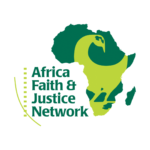This is an excerpt of AFJN’s November 2009 Paper on the RDC (download PDF Vesrion of the paper here)
Posted on Feb 12, 2010
While the Rwandan government is pressing hard for the return of the Hutu refugees, it is planning to illegally release more of its citizens, specifically those from the Tutsi tribe, into North Kivu. U.N report, S/2009/253, paragraph 22, although not very specific, points to the first steps of the process toward this goal. The group of experts says that “Kinshasa and Kigali have been brokering meetings between prominent members of the political and business community in North Kivu, with discussions centering in part on the possibility of imposing a new governor in Goma who could better represent their respective interests. Some of the discussions have focused on the possibility of eventually splitting North Kivu into two provinces to achieve this. Those deliberations have involved political networks close to Désiré Kamanzi and Eugène Serufuli, a former governor in North Kivu, although the group understands that political figures closer to General Nkunda are now involved in some negotiations.” (1) Also, already through CNDP, Rwanda was able to infiltrate the Congolese army and has people in provincial and state level positions as a result of the Congolese government and CNDP agreement in Goma on January 23.(2)
Plans of massive illegal migration of Rwandan citizens, mostly in North Kivu, is of great concern for peace. On August 16, 2009, 40 traditional leaders met representatives of the U.N. peacekeeping mission (MONUC) in Goma to express their concerns about the return of Congolese refugees living in Rwanda. They said that “…we must proceed by identification. Instead of identifying people in Rwanda, we as chiefs at the next meeting, we will submit the exact figures. This way we will have helped UNHCR to identify refugees.”(3) This was after leaders from Rwanda, DRC and the UNCHR met in Goma on August 14, 2009 to discuss ways refugees from both nations can return. It is estimated that about 52,000 Congolese refugees live in Rwanda and 100,000 Rwandan refugees are in the DRC according to UNCHR 2008 census.(4)
Aware of the scramble for resources, Rwanda would do anything to take advantage of the weakness of the Congolese leadership to take as many steps possible toward Rwandan plans to acquire land control at least, and a review of Congo-Rwanda boarders and political influence in eastern Congo at best. Many Rwandans acquired Congolese identifications cards during the 2005 presidential election and many more will do the same if the 2011 presidential elections are held. The electoral identification is, according to the Congolese foreign minister’s communiqué number N°130.07/0040/2009 a proof of citizenship and can be used to get a Congolese passport, a privilege that those who illegally got their identification now have. Congo must enforce its immigration laws.
The situation at hand will refuel the already existing land disputes, but it can be avoided. First, the Congolese must make sure they denounce anyone who has acquired Congolese identity unlawfully. Independently from the Rwandan government and in collaboration with the Congolese government, the UNHCR must carefully identify Congolese refugees living in Rwanda before they return to Congo. The Congo should set up an effective identification of its citizens in collaboration with traditional leaders who likely know who lived where and when. The absence of such process constitutes a security issue for the Congo.
Endnotes
1. S/2009/253
2. Ibid
3. Nord-Kivu : les chefs traditionnels se prononcent sur le retour des réfugiés congolais et l’opération Kimia 2. Radiookapi.net, August 16, 2009. Web. August 17, 2009.
4. Goma : une tripartite RDC-Rwanda-HCR sur les réfugiés de deux pays . Radiookapi.net, August 14, 2009.Web. August 17, 2009
